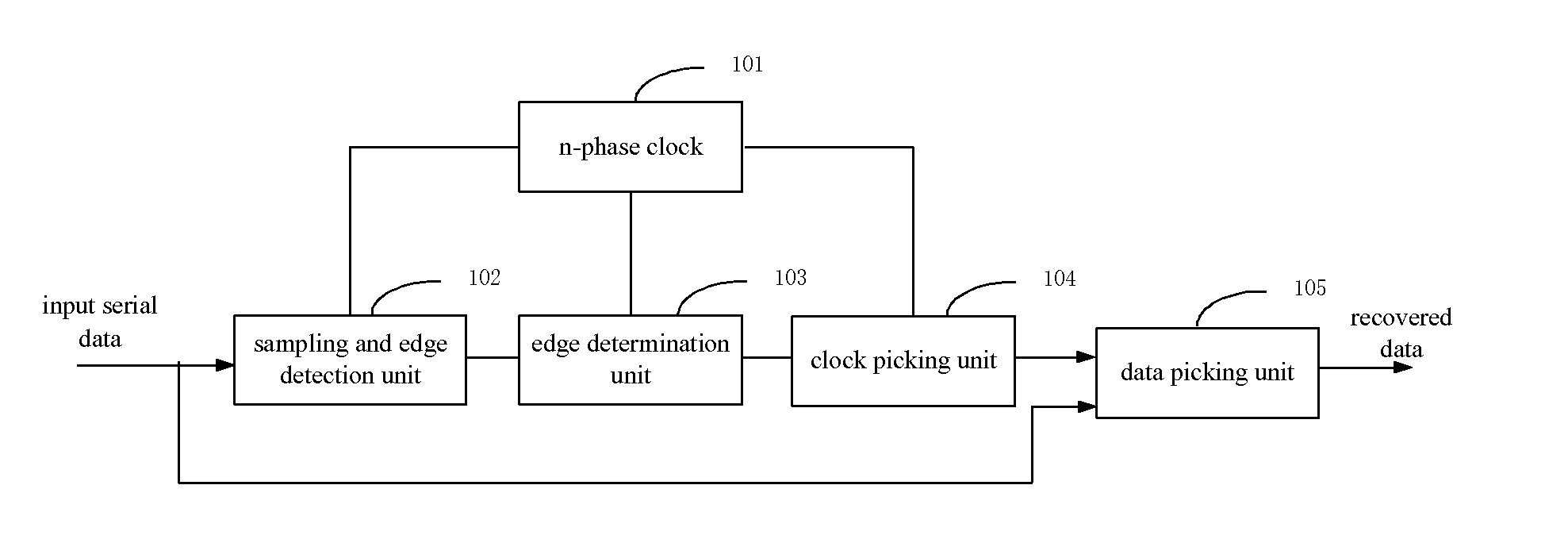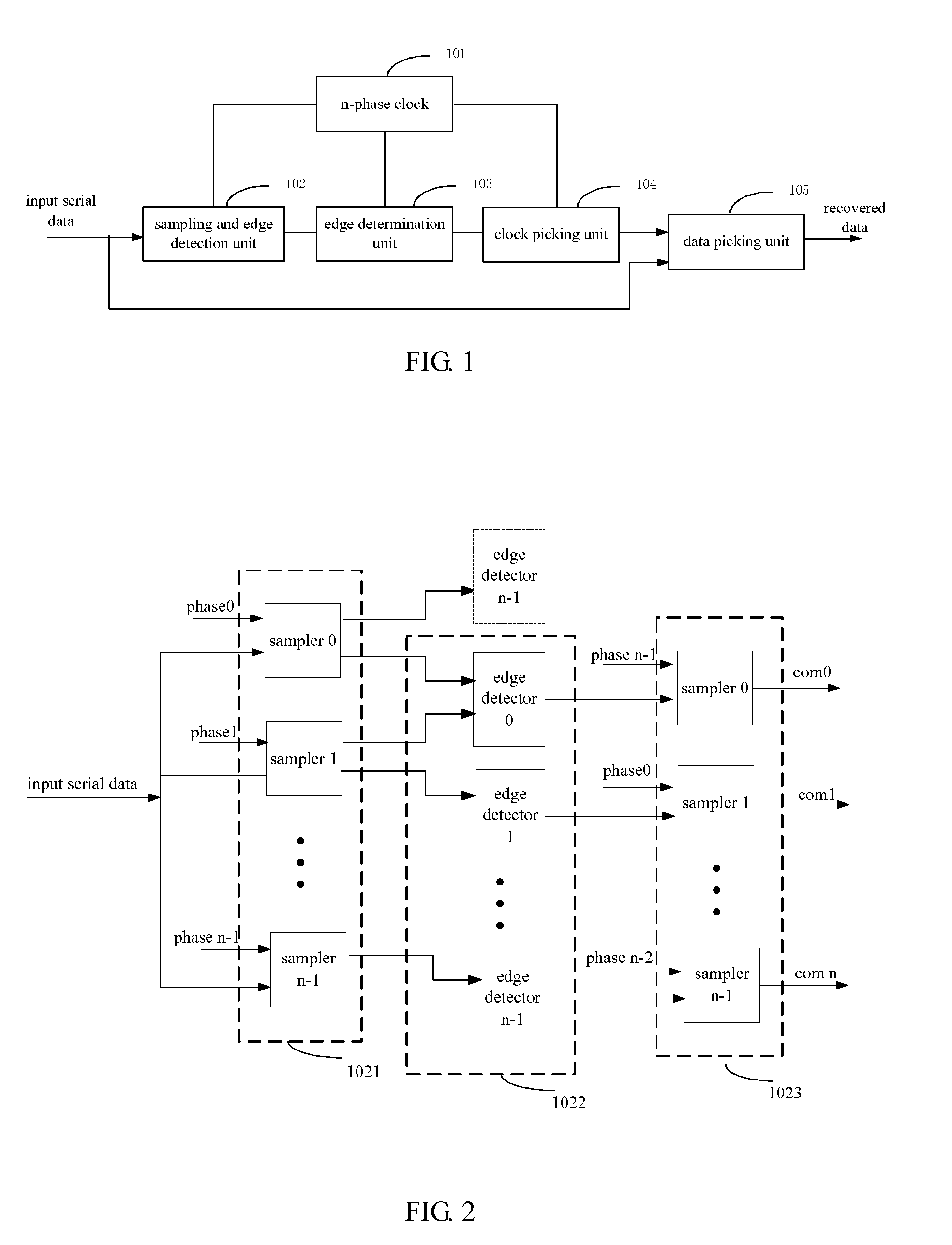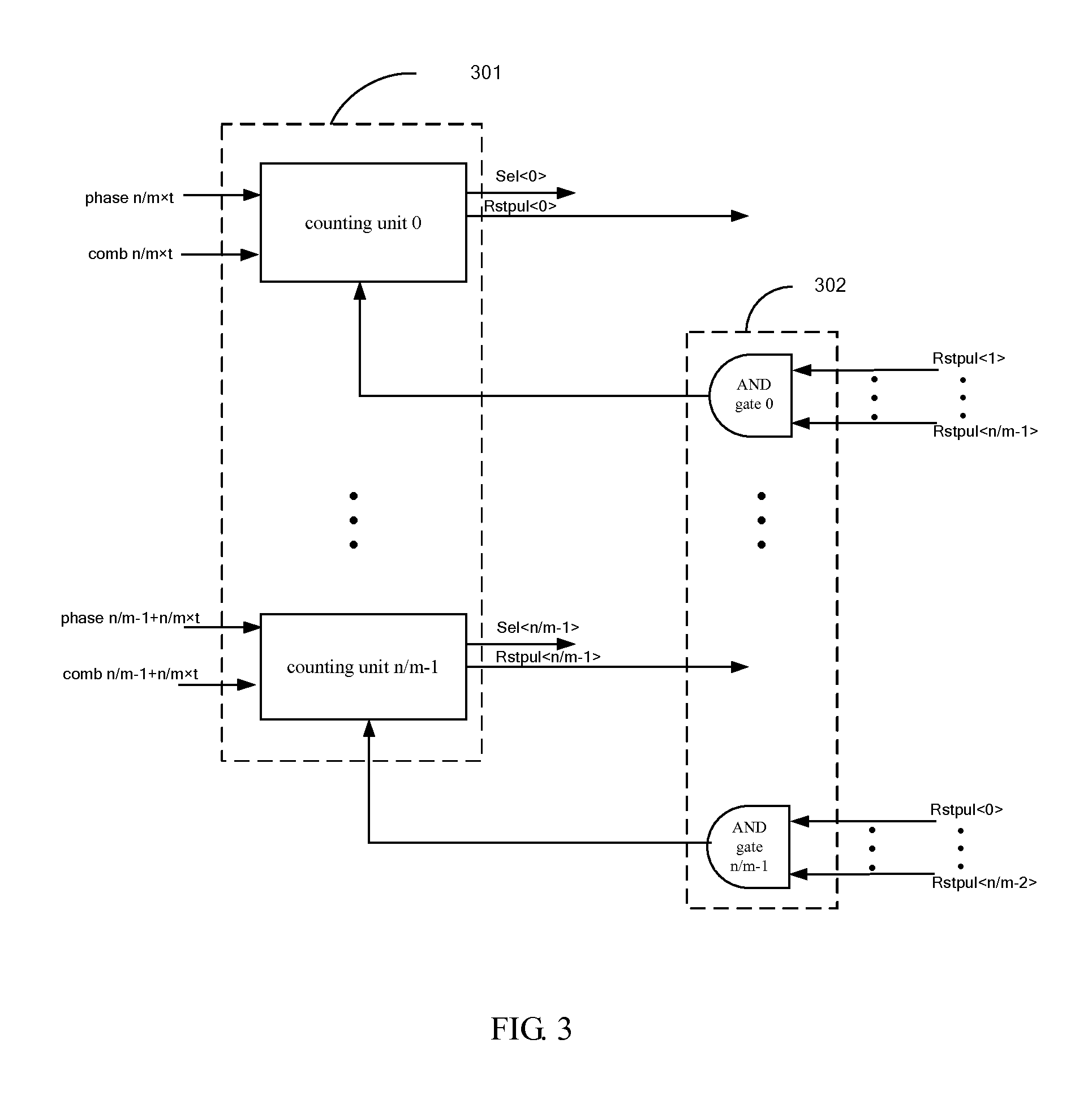Clock and Data Recovery Circuit and Parallel Output Circuit
a clock and data recovery and parallel output technology, applied in the field of data communication, can solve the problems of high high complexity, and inability to meet high-speed situations, and achieve the effect of low jitter of the recovered clock
- Summary
- Abstract
- Description
- Claims
- Application Information
AI Technical Summary
Benefits of technology
Problems solved by technology
Method used
Image
Examples
first embodiment
[0050
[0051]As shown in FIG. 1, an embodiment of the present invention provides a CDR circuit. In the embodiment, the circuit includes: an n-phase clock 101, a sampling and edge detection unit 102, an edge determination unit 103, a clock picking unit 104 and a data picking unit 105. Specifically, the rate ratio of input serial data to any of the clock signals provided by the n-phase clock is m. When m=1, the rates of the input serial data and the n-phase clock are the same, and the n-phase clock operates in a full-rate mode. Generally, the n-phase clock may also operate in a 1 / m rate mode, e.g., ½, ⅓ or ¼; hence m is a natural number greater than zero. In the embodiment, the n-phase clock is used for spaced sampling of the input serial data, with n / m being a sampling accuracy. In order to satisfy the sampling theorem, n / m must be a natural number greater than 2, and it is clear that n is an integer multiple of m.
[0052]As shown in FIG. 2, the sampling and edge detection unit 102 in th...
second embodiment
[0079
[0080]A CDR circuit in accordance with another embodiment of the present invention is illustrated in FIG. 5. In the embodiment, the circuit includes: an n-phase clock 101, a sampling and edge detection unit 102, an edge determination unit 501, a clock picking unit 502 and a data picking unit 503. Specifically, m=1, in other words, the rates of the input serial data and the n-phase clock are the same, i.e., the n-phase clock is in a full-rate mode.
[0081]The sampling and edge detection unit 102 may have the same structure and functions as those of the sampling and edge detection unit 102 in the first embodiment as shown in FIG. 2. Detailed description is thus omitted.
[0082]In the embodiment, the edge determination unit 501 includes n counting units. A k-th counting unit is used to count the sampled edge information from a k-th sampler in the second sampling group, using a k-th or (k+1)-th clock provided by the n-phase clock. When a counting value of an s-th counting unit of the n...
third embodiment
[0087
[0088]A CDR circuit in accordance with yet another embodiment of the present invention is illustrated in FIG. 8. In the embodiment, the circuit includes: an n-phase clock 101, a sampling and edge detection unit 102, an edge determination unit 103, a clock picking unit 104, a path matching unit 801 and a data picking unit 802.
[0089]The n-phase clock 101, the sampling and edge detection unit 102, the edge determination unit 103 and the clock picking unit 104 may have the same structure and functions as those of the sampling and edge detection unit 102 in the first embodiment. Detailed description is thus omitted.
[0090]The input serial data are input to the path matching unit 801. The time delay of the path matching unit 801 must be the same as the clock picking unit 104. Specifically, the logic devices used in the path matching circuit may be consistent with those of the clock picking unit, thereby eliminating the need to adjust the time delay of the path matching circuit.
[0091]T...
PUM
 Login to View More
Login to View More Abstract
Description
Claims
Application Information
 Login to View More
Login to View More - R&D
- Intellectual Property
- Life Sciences
- Materials
- Tech Scout
- Unparalleled Data Quality
- Higher Quality Content
- 60% Fewer Hallucinations
Browse by: Latest US Patents, China's latest patents, Technical Efficacy Thesaurus, Application Domain, Technology Topic, Popular Technical Reports.
© 2025 PatSnap. All rights reserved.Legal|Privacy policy|Modern Slavery Act Transparency Statement|Sitemap|About US| Contact US: help@patsnap.com



